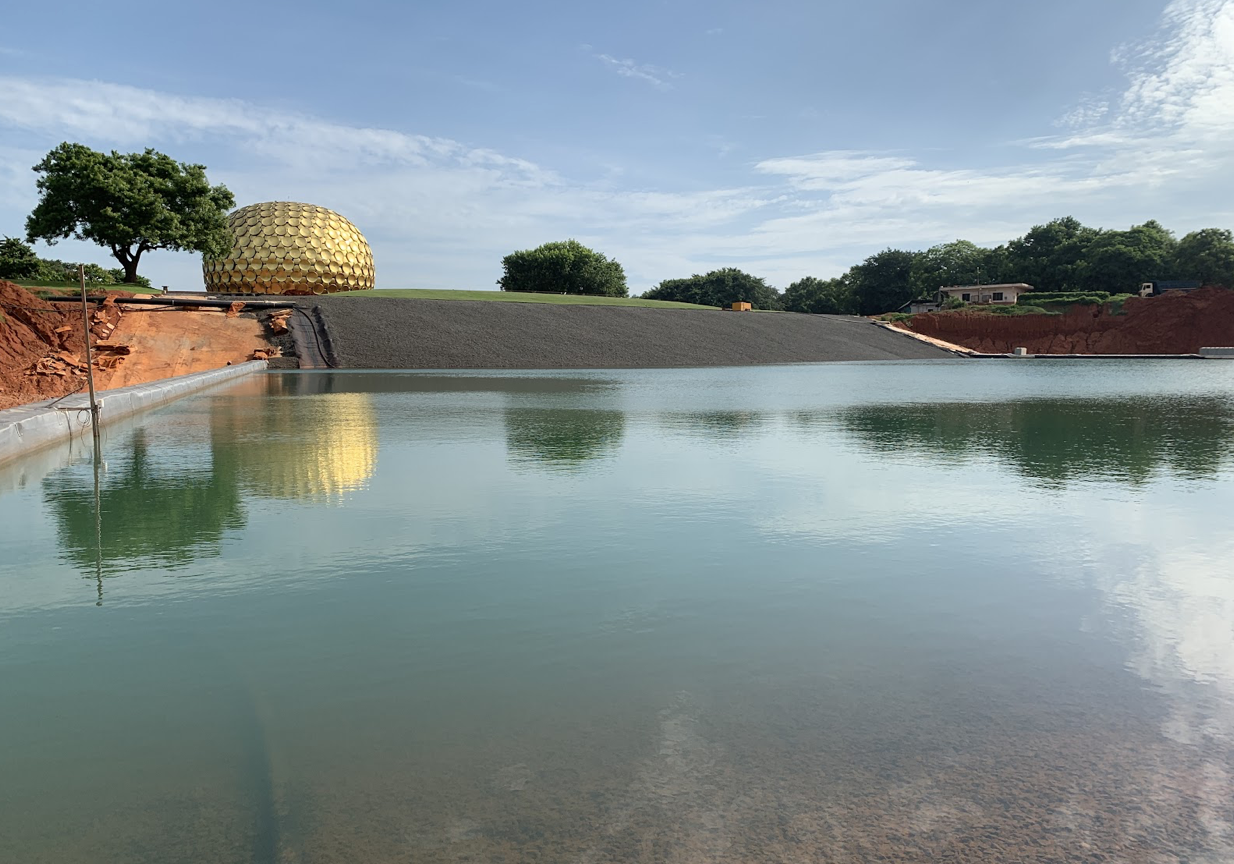Due to unexpectedly generous summer rains, the water level in the Matrimandir Test Lake rose to 5.10 meters, only 20 or 30 centimeters away from its maximum capacity. The rainwater collected from the 22-acre Matrimandir Gardens area was efficiently channeled to the lake through a newly constructed open water channel, designed specifically for this purpose. It has proved to be highly effective.
Now, the focus is on constructing the concrete block walls of the lake to create a larger catchment area for the upcoming winter monsoon of 2023. As depicted in the photo, a sample wall has already reached a height of approximately 8.3 meters, which should be sufficient to contain this year’s rainfall. However, one must always be prepared for surprises from Mother Nature. Just two years ago, the monsoon brought over two meters of rain, causing an overflow even with an 8.3-meter wall.
Simultaneously, preparations are underway for the construction of Section Two of the lake. This involves relocating trees and boulders. Furthermore, a new public Viewing Point is being built just outside the future boundary of Section Two. To accomplish this, the immense pile of earth, measuring around 8 meters in height, excavated from the Test Lake is being utilised. The pile has been leveled, contoured, and is now being transformed into a landscaped Viewing Point.
It is worth noting that there were actually two substantial earth mounds resulting from the excavation of the Test Lake. One mound consisted of the surface layer’s red earth, while the other was composed of gravelly earth from deeper layers. The new Viewing Point is being erected on top of the gravel hill, situated to the south of Matrimandir. Additionally, an intriguing experiment is taking place on the northern hill, reaching a height of approximately 14 meters, within the Matrimandir compound.
This is the development of a prototype to demonstrate the technique of “up-hill power storage”. In this concept, water is pumped up, preferably using solar energy, to a small pond on the top of a hill. Then, in the evening, or during power cuts when power is needed on site, the water is allowed to flow back down from the hill through a pipe in which is installed a turbine. The turbine generates electric power which can be used on the site, when required.This technique is well known around the world, and the idea here is to incorporate it into the final set up of the Matrimandir Lake and Hill. So, during the summer, on top of the 14-meter-high hill of red earth, a pond of about 1000 cubic meters has been dug out, and lined with HDPE liner, as a first step towards demonstrating the feasibility of using this principle at Matrimandir.

